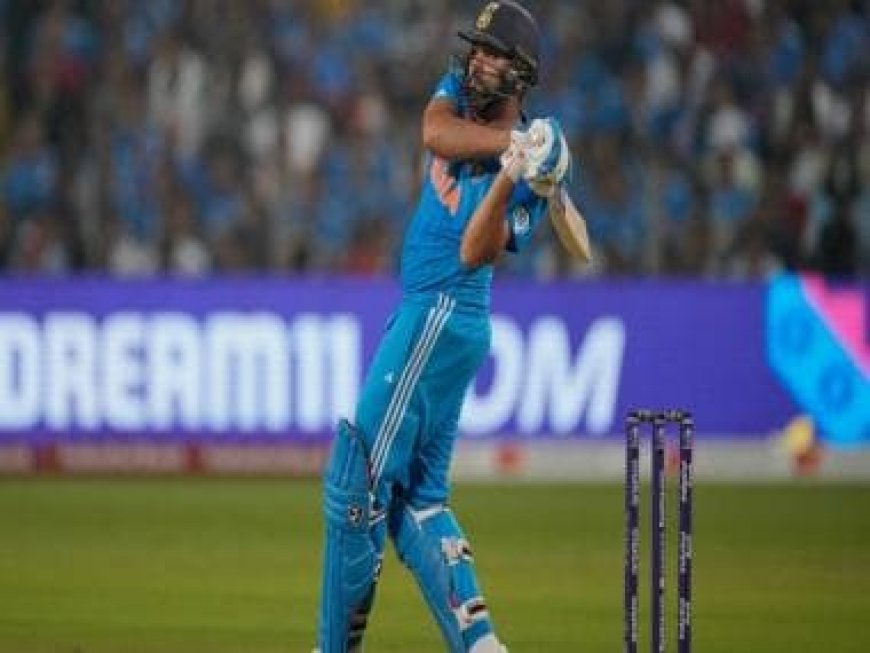India vs Bangladesh: Virat Kohli made a century, but impact of Rohit Sharma's 48 was no less
India vs Bangladesh: Virat Kohli made a century, but impact of Rohit Sharma's 48 was no less

Rohit Sharma is a batter transformed.
This may sound a bit odd to some. After all the 36-year-old has been playing international cricket for more than 16 years since 2007. A period in which he made a name by playing mammoth innings in white-ball cricket with his set template of first laying down the foundation and then exploding later.
World Cup 2023: News | Schedule | Results | Points table
But 16 years into international cricket and at the age of 36, which is considered pretty senior in the sport, Rohit has shown that he is still capable of unlearning old habits and flexible enough to alter his game and philosophy.
There’s a stat to explain how the India captain has remodelled his batting and in the process changed India’s approach to ODIs.
The strike rate revolution
Rohit’s strike rate in the first 10 overs has been a whopping 111 since the start of 2022. It stood at 68 in 2019 and 88 in 2020 and 2021.
Rohit Sharma in a different league since 2022 in powerplay overs. #INDvsBAN pic.twitter.com/mOaTfl57rn
— R A T N I S H (@LoyalSachinFan) October 19, 2023
In 2023 alone, the Mumbai Indians captain has scored 554 runs in the first 10 overs at a strike rate of 113.99 and an average of 92.33. Rohit has hit 32 sixes in the first 10 overs in ODIs this year — most for a batter in a year.
The aggressive batting from the Mumbaikar has benefited India massively in the batting powerplays. The Men in Blue scored at 4.4 an over in 2019 in batting powerplay and now that stands at 6.27 since 2022.
On Thursday, Virat Kohli made 103 not out and Shubman Gill slammed 53 off 55 balls, but it was Rohit’s aggressive 48 off 40 that effectively ended Bangladesh’s hope of defending the 257-run target. By the time Rohit got out, India had raced to 88 in just 12.4 overs.
Virat Kohli, Rohit Sharma and KL Rahul hugged and smiling after won the match.#ViratKohli #RohitSharma #indiavsbangladesh #INDvBAN #KLRahul pic.twitter.com/KmmMJMW4MN
— Scout OP (@scoutopp69) October 19, 2023
A majority of his runs (37 off 33) came in the first 10 overs which also included a pull-shot six over mid-wicket off Shoriful Islam.
It’s a template that Rohit has been following for a while. After getting out for a duck against Australia in the World Cup opener, the skipper effectively finished the next three games in the first 10 overs itself with his slam-bang batting. Against Afghanistan, he scored 76 off 44 balls in the first 10 overs with four sixes and finished on 131 as India completed the 273-run chase in just 35 overs.
Against Pakistan, Rohit scored 45 from 30 balls in the first 10 overs including four sixes again, and finished on 86 off 63 as the Men in Blue chased down a 192-run target inside 31 overs.
How the change was made
It’s quite obvious that it’s a conscious change by the opener who was handed over the ODI reins in December 2021.
“I wanted to take more risks, which is why my numbers are slightly different now,’: Rohit told news agency PTI earlier this year.
“My career strike rate is around 90 (89.97) but in the past couple of years, if you look at my scores and take the strike rate into consideration, it has been around 105-110. So somewhere you had to compromise. It is not possible to have a 55 average and a 110 strike rate. This high-risk game is also a process of his self-discovery.”
Why the change was needed
Besides benefitting his strike rate, the policy to start boldly rather than playing safe at the start is something that is seen as a solution to India’s ICC title drought. For long it has been felt that on big occasions and in the crucial games, India have failed to be aggressive enough, allowing the opposition to dictate terms.
Rohit and Shikhar Dhawan, who have been India’s openers for the best part of the last decade, relied on their natural game of accumulating risk-free runs at the start before going big towards the end. While the strategy paid well for India in the bilaterals, it ended up inviting unnecessary pressure on the team in big chases and big games.
The white-ball cricket has also gone through a transition where even a score of 350 is seen as chaseable and India had to adapt. The fact that the change has come directly from the skipper, especially after he was handed over the captaincy duties less than two years before the 2023 World Cup, exemplifies how determined Rohit is to end that title drought under his watch.
What's Your Reaction?


























































